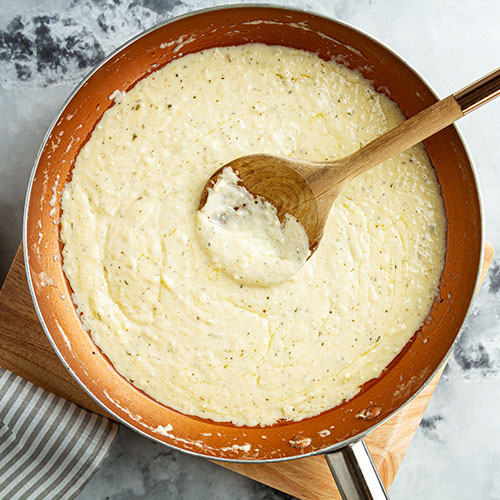Peruvian Lomo Saltado: History, Ingredients, Cooking Tips, and Perfect Pairings
Lomo Saltado’s roots date back to the late 19th century during the Chinese migration to Peru. Chinese immigrants, primarily Cantonese, merged their stir-frying techniques with local Peruvian ingredients such as potatoes and aji peppers. This fusion resulted in a unique blend of flavors. By incorporating soy sauce and other Asian condiments, these immigrants established a dish that bridged two culinary worlds. As a result, Lomo Saltado exemplifies the fusion of indigenous Peruvian and Chinese culinary practices.
Evolution of the Dish
Initially, Lomo Saltado was a modest stir-fry reflecting the humble origins of its creators. Over time, it evolved to accommodate various ingredients across different regions in Peru. Beef, once the primary protein, now shares the spotlight with chicken and seafood alternatives. French fries or potato wedges, initially a substitute for rice, later became integral to the dish. Today, Lomo Saltado remains a national favorite, served in both street food stalls and upscale restaurants. Adaptation to modern dietary preferences and constant innovation keep it relevant in contemporary Peruvian cuisine.
Key Ingredients and Substitutions
Traditional Components
Lomo Saltado features a blend of Peruvian and Chinese ingredients that combine to create its unique taste. The dish primarily includes:
- Beef Tenderloin: Lean and flavorful, cut into strips.
- Red Onions: Sliced and provide a sharp bite.
- Tomatoes: Chopped and add acidity and juiciness.
- Aji Amarillo: A yellow chili pepper, sliced, offering mild heat.
- Soy Sauce: Adds umami and depth.
- Vinegar: Typically red wine vinegar, for tanginess.
- Cilantro: Chopped, for a fresh, herbal note.
- Potatoes: Often served as French fries, adding a crispy texture.
- Rice: Steamed, to balance the flavors and absorb the sauce.
Alternative Ingredients for Dietary Restrictions
To accommodate various dietary needs, consider these substitutions:
- Vegetarian/Vegan: Replace beef with firm tofu or seitan. Use tamari instead of soy sauce for a gluten-free option.
- Gluten-Free: Use gluten-free soy sauce. Ensure vinegar and other condiments are certified gluten-free.
- Low Carb: Swap potatoes with cauliflower rice or zucchini noodles. Reduce or eliminate rice.
- Low Sodium: Opt for low-sodium soy sauce. Balance flavors with extra herbs and spices rather than salt.
These alternatives ensure Lomo Saltado retains its characteristic flavors while catering to dietary preferences.
Cooking Techniques
Marinating the Meat
Marinating ensures the beef tenderloin absorbs maximum flavor. Cut the beef into thin strips to allow the marinade to penetrate each piece. The marinade typically includes soy sauce, vinegar, garlic, and aji amarillo paste. Mix the ingredients in a bowl and add the beef strips, ensuring each piece is well-coated. Let the beef marinate for at least 30 minutes for optimal flavor absorption. Longer marinade times can intensify the flavors.
Stir-Frying Fundamentals
Stir-frying is a quick-cooking technique essential for Lomo Saltado. Heat a wok or large skillet over high heat until it’s very hot. Add a small amount of oil with a high smoke point, such as vegetable or canola oil. When the oil shimmers, add the marinated beef strips in a single layer. Sear them quickly, turning frequently to ensure even cooking.
Remove the beef once it’s browned, then add sliced red onions, tomatoes, and aji amarillo to the wok. Stir-fry these vegetables until they soften but retain some crunch. Add the beef back into the wok along with soy sauce and vinegar to deglaze the pan, creating a flavorful sauce. Stir everything together, allowing the ingredients to meld for another minute.
Combining these techniques, you can prepare an authentic, flavorful Lomo Saltado while maintaining the dish’s integrity and ensuring the beef remains tender and the vegetables vibrant.
Pairing Suggestions
Recommended Side Dishes
Complement Lomo Saltado with these side dishes for a balanced meal:
- Rice: Serve white rice to absorb the savory sauce and enhance the dish’s flavors.
- French Fries: Use freshly made fries to provide a crunchy texture contrast.
- Quinoa: Choose quinoa as a modern alternative for a nutritious touch.
Including these sides ensures a harmonious balance of flavors and textures, enhancing the overall dining experience.
Beverage Pairings
Choose beverages that complement the rich and savory profile of Lomo Saltado:
- Pisco Sour: This traditional Peruvian cocktail’s tartness balances the dish’s bold flavors.
- Chicha Morada: Its sweet and fruity notes refresh your palate between bites.
- Red Wine: Opt for a Malbec or Cabernet Sauvignon to match the robustness of the beef.
These beverage options cater to different preferences, ensuring a satisfying culinary experience when enjoying Lomo Saltado.
Conclusion
Embracing the rich cultural tapestry of Peruvian Lomo Saltado offers a delightful culinary journey. This dish isn’t just about the fusion of flavors; it’s a testament to Peru’s diverse heritage. Whether you’re a traditionalist or seeking a modern twist, Lomo Saltado can cater to your palate. Pair it with classic sides or inventive beverages to elevate your dining experience. Dive into the world of Lomo Saltado and savor the blend of history and taste in every bite.






